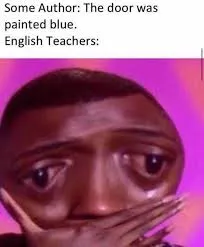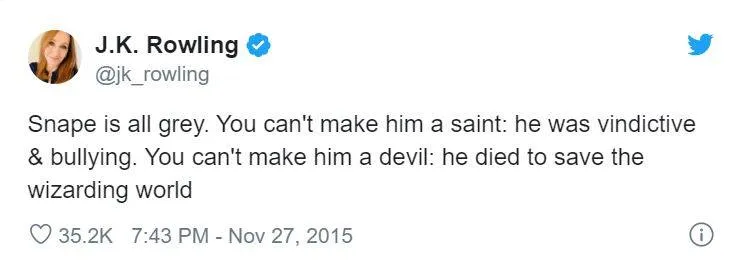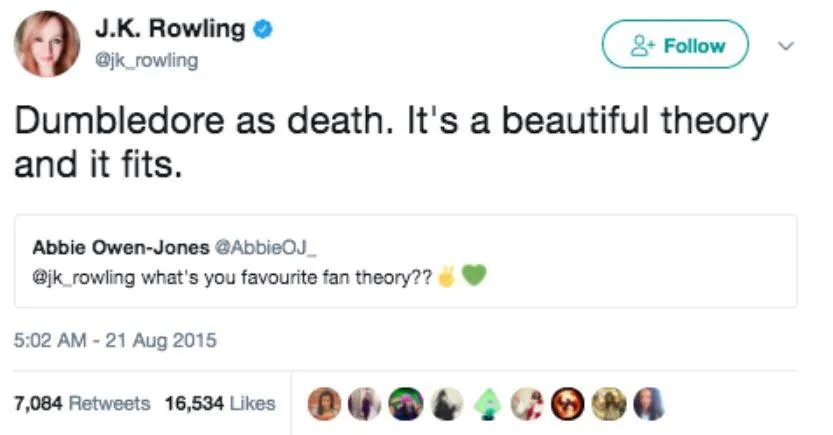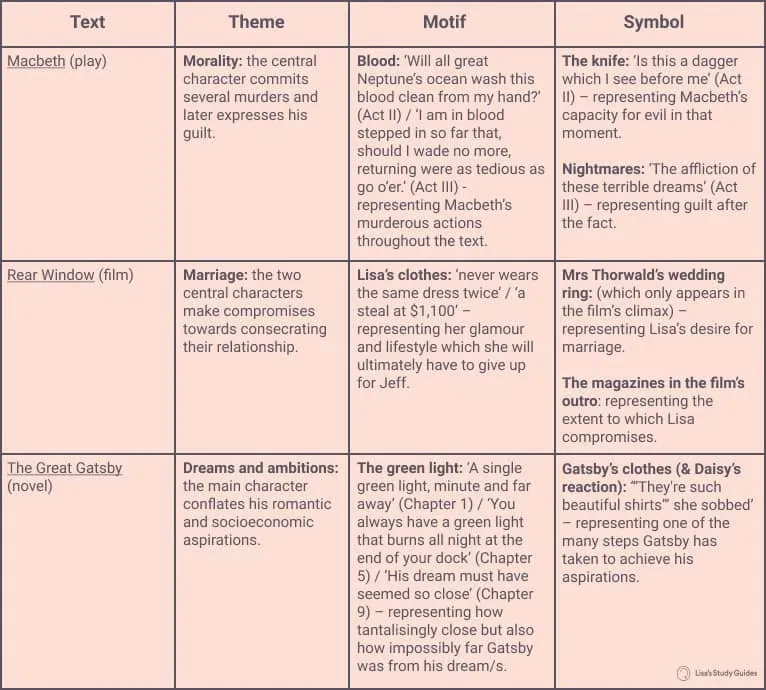The Great Gatsby is usually studied in the Australian curriculum as a Text Response. For a detailed guide on Text Response, check out our Ultimate Guide to VCE Text Response.
Introduction
Call it the greatest American novel or the ultimate story of unrequited romance, The Great Gatsby is undoubtedly a stunning snapshot of one of the most American decades that America has ever seen. The 1920s saw significant economic growth after WWI, and what’s more American than material excess, wealth and prosperity? The stock market was going off, businesses were booming, and people were having a great time.
Well, not everybody - on the flipside, what’s more American than socio-economic inequality or the ever-quixotic American Dream?
In this blog, we’ll go through the novel in this context, examine some of its key themes, and also have a think about the critiques it raises about American society. We’ll also go through an essay prompt that ties some of these things together.
Life in the Roaring Twenties

This snapshot from the 2013 film adaptation actually tells us a lot about the 1920s. On the one hand, social and cultural norms were shifting - men no longer sported beards, and women were dressing more androgynously and provocatively. On the other hand, the modern American economy was emerging - people began buying costly consumer goods (like cars, appliances, telephones, etc.) using credit rather than cash. This meant that average American families were able to get these things for the first time, while more prosperous families were able to live in extreme excess.
In Fitzgerald’s novel, the Buchanans are one such family. Tom and his wife Daisy have belonged to the 1% for generations, and the 1920s saw them cement their wealth and status. At the same time, the booming economy meant that others (like the narrator Nick) were relocating to cities in pursuit of wealth, and (like Gatsby) making significant financial inroads themselves.
The Great Gatsby traces how the differences between these characters can be destructive even if they’re all wealthy. Add a drop of Gatsby’s unrequited love for Daisy, and you have a story that ultimately examines how far people go for romance, and what money simply can’t buy.
The answer to that isn’t so obvious though. No, money can’t buy love, but it also can’t buy a lot of other things associated with the lifestyle and the values of established wealth. We’ll get into some of this now.
Wealth and Class
Fitzgerald explores tensions between three socio-economic classes: the establishment, the nouveau riche and the working class.
Tom and Daisy belong to the old money establishment, where wealth is generational and inherited. This means they were born into already wealthy families, which affects their upbringing and ultimately defines them, from the way they speak (Tom’s ‘paternal contempt’ and Daisy’s voice, ‘full of money’) to their major life decisions (including marriage, symbolised through the ‘string of pearls’ he buys for her, which, fun fact, is estimated to be worth millions of dollars today). It also affects their values, as we’ll see in the following section.
For now, consider this image of their home (and those ponies on the left, which they also own), described as follows:

‘The lawn started at the beach and ran toward the front door for a quarter of a mile, jumping over sundials and brick walks and burning gardens - finally when it reached the house drifting up the side in bright vines as though from the momentum of its run.’
Nick Carraway also comes from a similar (though not as extravagant) background. His family had been rich by Midwestern standards for ‘three generations’ before he came to New York.
Conversely, Gatsby belongs to the nouveau riche, or new money. Unlike the Buchanans, Gatsby was born into a poor family, only coming to wealth in the 1920s boom. Specifically, he inherited money from Dan Cody after running away from home at 17.
Although they are all rich, there are significant cultural differences between old and new money. Old money has its own culture of feigned politeness, which Gatsby doesn’t quite get. When Tom and the Sloanes invite Nick and Gatsby to supper in Chapter 6, Gatsby naively accepts, to which Tom would respond behind his back, ‘Doesn’t he know [Mrs. Sloane] doesn’t want him?’. Even though Gatsby is financially their equal, his newfound wealth can’t buy his way into their (nasty, horrible) lifestyle.
Finally, this is contrasted with the working class, particularly George and Myrtle Wilson who we meet in Chapter 2. They live in a grey ‘valley of ashes’, the detritus of a prosperous society whose wealth is limited to the 1%. Fitzgerald even calls it a ‘solemn dumping ground’, suggesting that life is precarious and difficult here. Consider what separates George - ‘blond, spiritless…and faintly handsome’ - from Tom (hint: $$).
Myrtle is described differently, however; she is a ‘faintly stout’ woman with ‘perceptible vitality’. This may be less of a description of her and more of a commentary on Tom’s sexuality and what attracts him to her, such that he cheats on Daisy with her. Still, Myrtle’s relative poverty is evident in her expressions of desire throughout their meeting - ‘I want to get one of those dogs’, she says, and Tom just hands her the money.
Ultimately, looking at the novel through the lens of class, we see a society where upward social mobility and making a living for yourself are possible, just not for everybody. Even when you get rich, it doesn’t guarantee that you’ll suddenly, seamlessly integrate into the lives of old money folk.
Morality and Values
Added to this story of social stratification is a moral dimension, where Fitzgerald can be a little more critical.
Firstly, old money is portrayed as shallow. Daisy’s marriage to Tom and the Sloanes’ insincerity are elements of this, but another good example is Gatsby’s party guests. Many aren’t actually invited - they invite themselves, and ‘they came and went without having met Gatsby at all’. Their vacuous relationship to Gatsby is exposed when he dies, and they completely abandon him. Klipspringer, ‘the boarder’, basically lived in Gatsby’s house, and even then, he still wouldn’t come to the funeral, only calling up to get a ‘pair of shoes’ back.
The rich are also depicted as cruel and inconsiderate, insulated from repercussions by their wealth. Nick’s description of Tom’s ‘cruel body’ is repeatedly realised, as he breaks Myrtle’s nose in Chapter 2 and condescends Gatsby with ‘magnanimous scorn’ in Chapter 7. After Myrtle dies, Nick spots the Buchanans ‘conspiring’ and describes them as ‘smash[ing] up things and creatures and then retreat[ing] back into their money or their vast carelessness’ - he sees them as fundamentally selfish.
Gatsby is portrayed more sympathetically though, which may come from his humble upbringing and his desire to be liked. This is probably the key question of the novel - is he a hero, or a villain? The moral of the story, or a warning? Consumed by love, or corrupted by wealth?
I’m going to leave most of those for the next section, but I’ll finish here with one last snippet: Lucille, a guest at his parties, tears her dress and Gatsby immediately sends her a ‘new evening gown’. Weird flex, but at least he’s being selfless…
Honesty
That said, a major part of Gatsby’s character is his dishonesty, which complicates his moral identity.
For starters, he fabricates a new identity and deals in shady business just to reignite his five-year-old romance with Daisy. We see this through the emergence of Meyer Wolfsheim, with whom he has unclear business ‘gonnegtions’, and the resultant wealth he now enjoys.
In Chapter 3, Owl Eyes describes Gatsby as a ‘regular Belasco’, comparing him to a film director who was well-known for the realism of his sets. This is a really lucid analysis of Gatsby, who is, in many ways, just like a film director constructing a whole fantasy world.
It’s also unclear if he loves Daisy for who she is or just the idea of her and the wealth she represents. Indeed, he doesn’t seem to treat her as a person, but more like something that he can pursue (like wealth). This is a good read, so I won’t really get into it here - just consider how much things have changed since Gatsby first met Daisy (like her marriage and her children), and how Gatsby ignores the way her life has changed in favour of his still, stationary memory of who she used to be.
Love, Desire and Hope
All of this makes it tricky to distil what the novel’s message actually is.
Is it that Gatsby is a good person, especially cast against the corrupt old money?
This analysis isn’t wrong, and it actually works well with a lot of textual evidence. Where Nick resents the Buchanans, he feels sympathy for Gatsby. He explicitly says, ‘they’re a rotten crowd…you’re worth the whole damn bunch put together’. Maybe love was an honourable goal compared to money, which ostensibly makes you ‘cruel’ and ‘careless’.
I wouldn’t say he was cruel, but this reading is complicated by how he can be careless, choosing not to care about Daisy’s agency, and letting his desires overtake these considerations.
Is it that Gatsby and his desire for Daisy were corrupted by wealth despite his good intentions?
There’s also evidence to suggest wealth corrupts - Nick describes it as ‘foul dust’ that ‘preyed’ on Gatsby, eroding his good character and leaving behind someone who resembles the vacuous elite. Although love might’ve been an honourable goal, it got diluted by money.
Gatsby’s paradigm for understanding the world becomes driven by materialism, and he objectifies Daisy. He starts trying to buy something that he originally didn’t need to buy - Daisy’s love. She certainly didn’t fall in love with this man who owned a mansion and a closet full of ‘beautiful shirts’. Thus, Gatsby is a sympathetic product of a system that was always stacked against him (a poor boy from North Dakota). Capitalism, right?
Is it that capitalist America provides nothing for people to pursue except wealth, and therefore, little reason for people to feel hope?
Well…
Past the Basics: Structural Economic Tension and the Doomed American Dream
Now we want to start thinking beyond the characters (e.g. whether Gatsby is a good person or not) and also factor in their social, historical, political and economic context (e.g. whether he was doomed to begin with by a society driven by money). This subheading does sound a bit much, but we’ll break it down here.
A key part of this novel is the American Dream, the idea that America is a land of freedom and equal opportunity, that anyone can make it if they truly try. Value is placed on upward social mobility (moving up from a working-class background) and economic prosperity (making $$), which defined much of the Roaring Twenties…
…for some.
For many others, there was significant tension between these lofty values and their lived reality of life on the ground. As much as society around them was prospering, they just couldn’t get a piece of the pie, and this is what makes it structural - as hard as George Wilson might work, he just can’t get himself out of the Valley of Ashes and into wealth. Indeed, you can’t achieve the dream without cheating (as Gatsby did).
So, there’s this tension, this irreconcilable gap between economic goals and actual means. Through this lens, the tragedy of The Great Gatsby multiplies. It’s no longer just about someone who can’t buy love with money - it’s about how nobody’s dreams are really attainable. Not everyone can get money, and money can only get you so far. Everyone is stuck, and the American Dream is basically just a myth.
Thus, the novel could be interpreted as a takedown of capitalist America, which convinced people like Gatsby that the answer to everything was money, and he bolted after the ‘green light’ allure of cold, hard cash, only to find out that it wasn’t enough, that it wasn’t the answer in the end.
Consider what kind of message that sends to people like the Wilsons - if money can’t actually buy happiness, what good is it really to chase it? And remember that Gatsby had to cheat to get rich in the first place.
Is [the novel’s message] that capitalist America provides nothing for people to pursue except wealth, and therefore, little reason for people to feel hope?
You tell me.
Prompt: What does Fitzgerald suggest about social stratification in the 1920s?
Whenever you get a new essay topic, you can use LSG’s THINK and EXECUTE strategy, a technique to help you write better VCE essays. If you’re unfamiliar with this strategy, then check it out in How To Write A Killer Text Response.
Let’s try applying this to a prompt. I’ll italicise the key points that have been brought up throughout this post.
Firstly, social stratification clearly divided society along economic lines. This could be paragraph one, exploring how class separated the Buchanans and Wilsons of the world, and how their lifestyles were so completely different even though they all lived in the prosperity of the Roaring Twenties. George Wilson was ‘worn-out’ from work, but he still couldn’t generate upward social mobility for his family, stuck in the Valley of Ashes. Conversely, Tom Buchanan is born into a rich family with his beach-facing mansion and polo ponies. Colour is an important symbol here - the Valley is grey, while East Egg is filled with colour (a green light here, a ‘blue coupe’ there).
The next paragraph might look at the cultural dimension, exploring how you can’t just buy a way of life. This might involve analysing Gatsby’s wealth as deluding him into thinking he can ‘repeat the past’ by buying into the lifestyle of old money. This is where Fitzgerald disillusions us about the American Dream - he presents a reality where it isn’t possible for anyone to make it, where the Buchanans still treat you with scorn even if you’re just as wealthy. Gatsby’s dishonesty is ultimately a shallow one - try as he might, he just cannot fit in and win Daisy back.
Finally, we should consider the moral dimension - even though the wealthier socioeconomic classes enjoyed more lavish, luxurious lifestyles, Fitzgerald also argued that they were the most morally bankrupt. Money corrupted the wealthy to the point where they simply did not care about the lives of the poor, as seen in the Buchanans’ response to Myrtle’s death. Even Gatsby had to compromise his integrity and deal in shady business in order to get rich - he isn’t perfect either. Social stratification may look ostentatious and shiny on the outside, but the rich are actually portrayed as shallow and corrupt.
A good essay on this novel will typically combine some of these dimensions and build a multilayered analysis. Stratification, love, wealth, morality - all of these big ideas can be broken down in terms of social, economic and cultural circumstances, so make sure to consider all angles when you write.
Have a Go at These Prompts!
1. Nick is biased in his assessment of Gatsby - both of them are no better than the corrupt, wealthy Buchanans. Do you agree?
2. In The Great Gatsby, money is a stronger motivating factor than love. Do you agree?
3. Daisy Buchanan is more innocent than guilty - explore this statement with reference to at least two other characters.
4. What does Fitzgerald say about happiness in The Great Gatsby?
5. Is money the true antagonist of The Great Gatsby?
6. The women of The Great Gatsby are all victims of a patriarchal society. To what extent do you agree? (Hint: are they all equally victimised?)
7. The Great Gatsby is a scathing critique of humanity at its most corrupt. Discuss. (check out this video for a full breakdown + essay plan for this prompt).
Challenge:
According to Fitzgerald, what really lies underneath the façade of the Roaring Twenties? Make reference to at least two symbols in The Great Gatsby. (Hint: façade = ‘an outward appearance that conceals a less pleasant reality’. Think about things like colours, clothes, buildings, etc.)
Resources
The Ultimate Guide to VCE Text Response
How To Write A Killer Text Response Study Guide
How To Embed Quotes in Your Essay Like a Boss
How To Turn Your Text Response Essays From Average to A+













.jpg)